Roman public bath complex in Durres, hidden behind railings
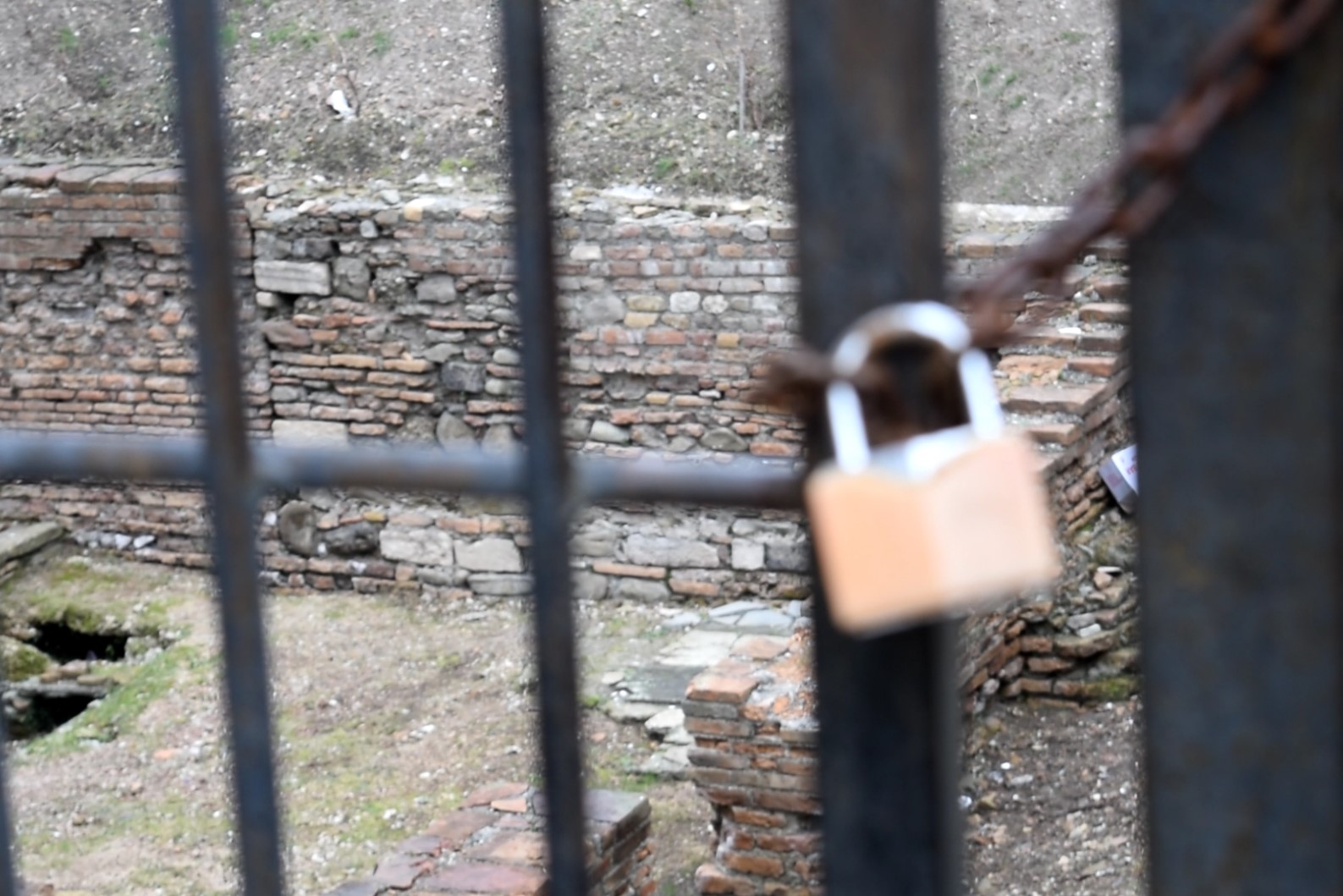
The works that were being carried out for the construction of the palace of culture in Durres, little by little brought to light the ancient ruins that led to the immediate cessation of the works. In 1960 an archeological excavation took shape that discovered a thermal complex that served in the period when the city of Durres was under Roman influence.
Carried out in a limited excavation area, the arches of the kiln, the walls and the floor of the premises of what once served as a public bath for the city emerged from the underground. Traces of the monument showed that it expanded beyond the surface of 700 square meters, but nevertheless its further excavation was not possible.
According to studies, public buildings are thought to have been built in the 2nd century AD and were used until the 5th-6th century AD. The thermal monument had the entrance to the dressing room, followed by the sweat room, and under its floor were placed hypocaust-shaped bricks, which served to pass hot steam.
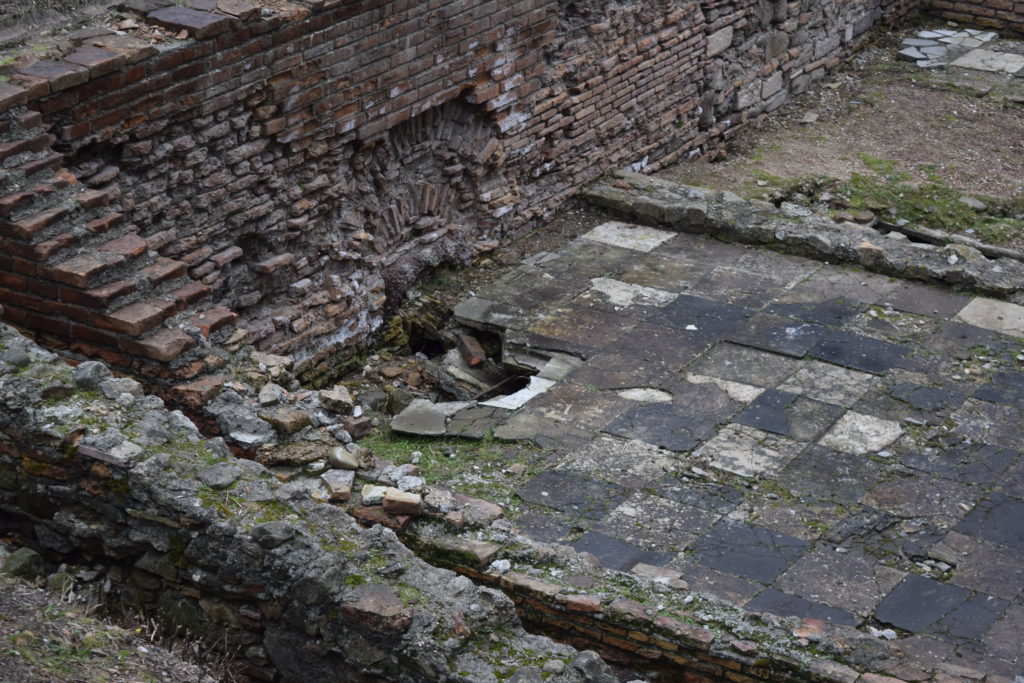
Roman bath facilities have been damaged by lack of maintenance. Photo_ Media Amfora 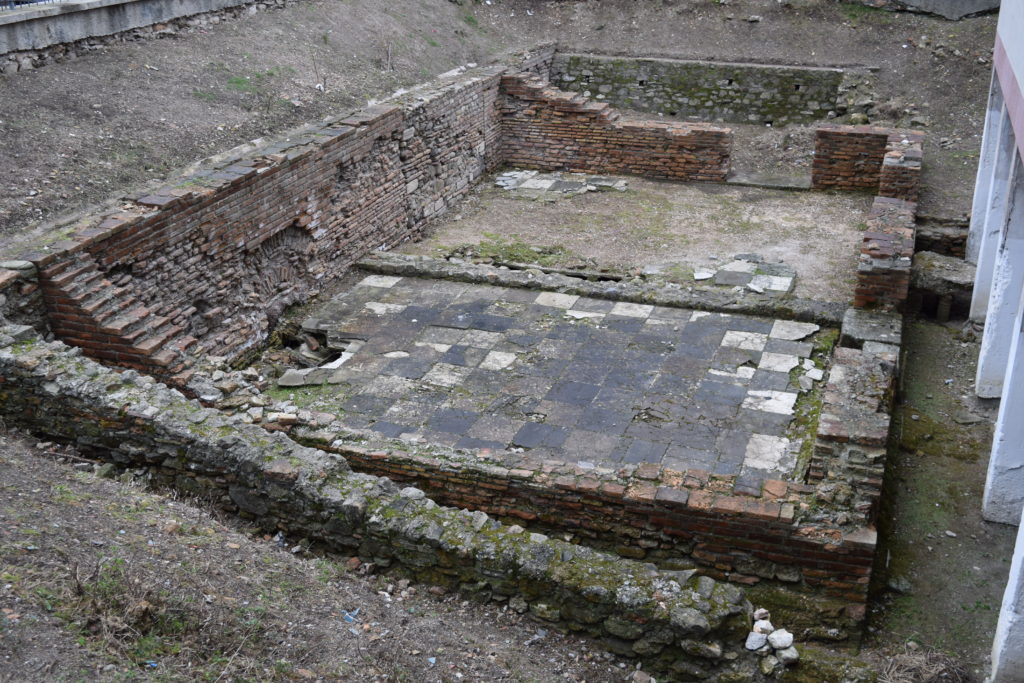
Roman bath facilities. Photo_ Media Amfora
The monument also had as part of it the room with cold water, which was followed by the environment of a swimming pool and today is still preserved on the surface the floor with black and white marble tiles, in the form of a chessboard.
The spaces of the monument seem to fanatically preserve other layers of Durres civilization. In 2016, the Epidam-Dyrrah Topography Project, thanks to the cooperation between Albanian and French archaeologists, discovered new archaeological layers.
Under the discoveries of the Roman period emerged layers of the earliest period, that of Hellenistic civilization. The ruins dating to the 3rd century BC testify to a two-room Hellenistic house, and in one of them was placed a mosaic, which was later destroyed.
On the important ancient discovery was built what is today known as the “Alexander Moisiu” Theater, coexisting with archaeological discoveries in its foundations. The discovery has been declared a First Category Cultural Monument since 1973 and continues to enjoy this status.
Beyond the blackboard and spelling mistakes, visitors can only cast a curious glance after the rusty fence. Since 2016, with the impact of the COVID-19 pandemic on the monument, the archaeologist have not stepped on it.
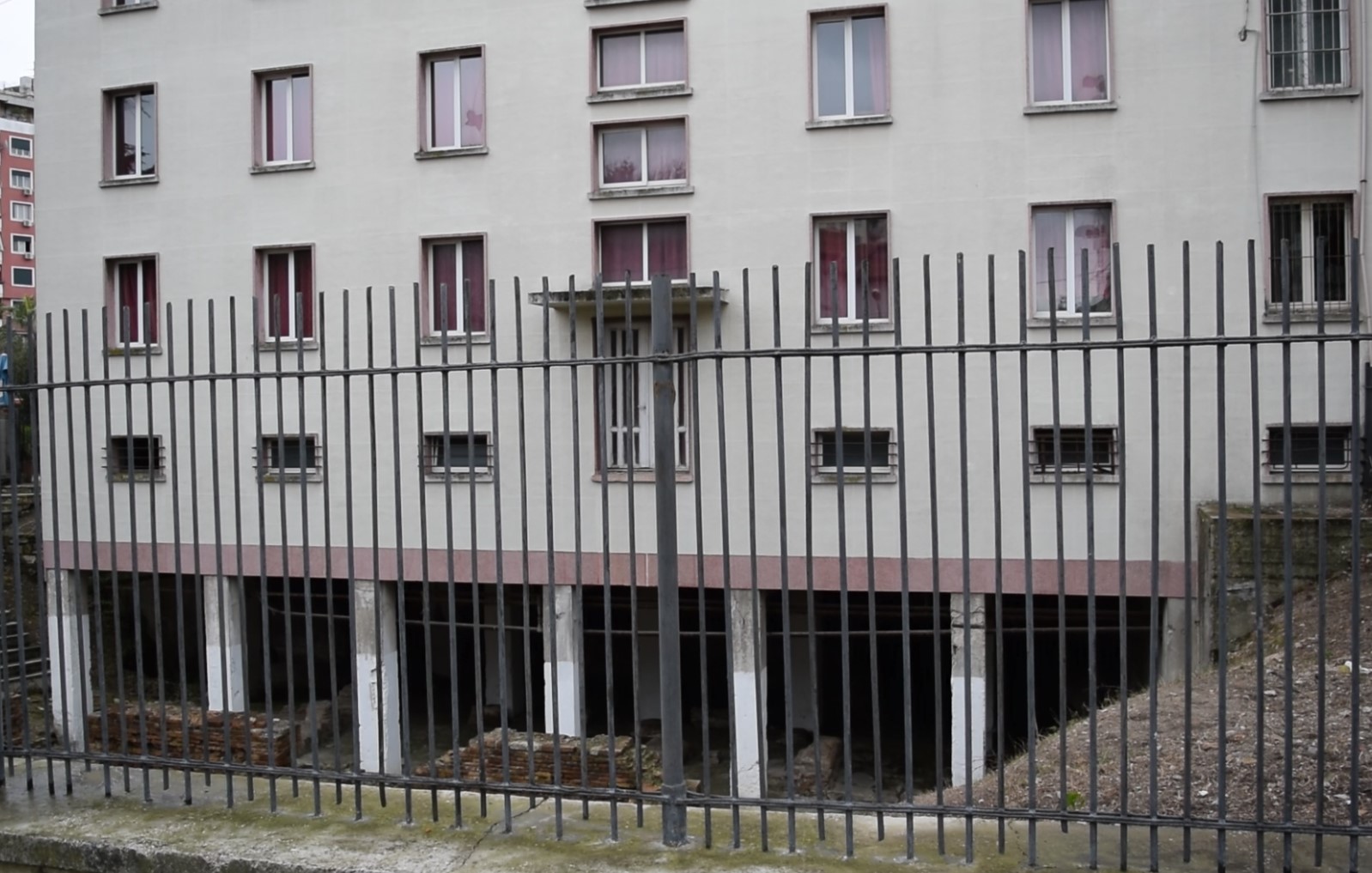
The premises of the Roman bath in the foundations of the “Aleksandër Moisiu” Theater. Photo_ Media Amfora 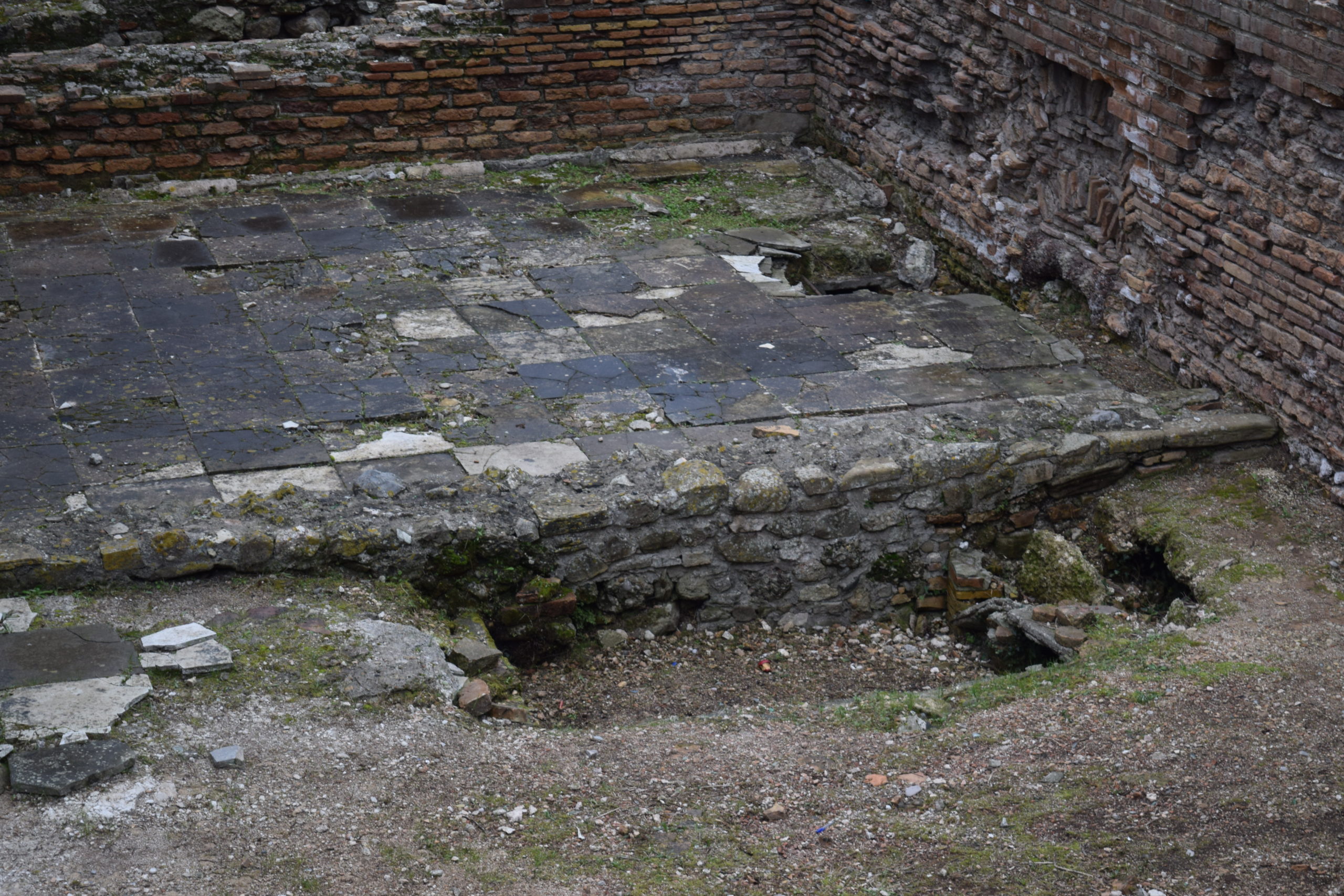
Black and white marble tile floor, in the shape of a chessboard. Photo_ Media Amfora
Left in oblivion and without maintenance, parts of the antique floor have been damaged by atmospheric conditions and vegetation. The doors of the monument have been closed for years and do not serve to inform the public or collect revenue from visits, although it is located near the city center, the boulevard and other magnificent monuments, such as the Byzantine Forum.
*Photo above: Closed Roman baths. Photo: Media Amfora


